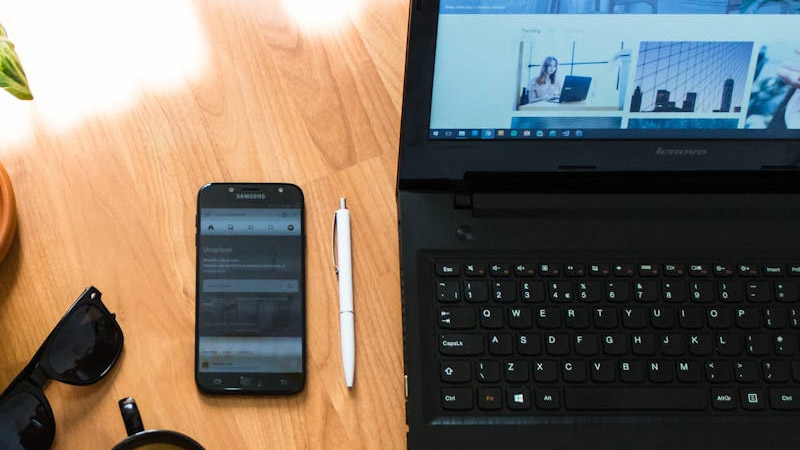- 首頁
- Blog
- What to Do When Your Instagram Account Is Hacked? Emergency Response SOP After Account Compromise
What to Do When Your Instagram Account Is Hacked? Emergency Response SOP After Account Compromise
2025 / 10 / 15
Have you ever imagined life without access to your social media platforms? For a moment, it may feel as though life has lost its vibrancy. However, a more alarming scenario is having your account hijacked without warning—and being asked to pay a ransom to regain control. The mere thought of such a situation can evoke feelings of helplessness and anxiety.
In today’s society, social platforms are not just digital albums for documenting life; they have become essential tools for many creators to build influence and generate income. Once an account is compromised, it’s akin to a physical store being ransacked—not only are your content and privacy at risk, but you may also find yourself with nowhere to turn for help.
So, what should you do if your Instagram account is actually hacked? This article, guided by the team at Arachne Group Limited, will take you through a step-by-step process—from emergency response measures to long-term protection strategies—to help you regain control of your account and build a more resilient digital security framework.
Based on years of social media marketing experience, the Arachne Group Limited team highlights that the most common attack method today is “phishing.” Hackers impersonate Meta officials, sending fraudulent emails or text messages to lure users into clicking malicious links. Once users enter their account credentials on these fake pages, their accounts can be immediately taken over, often followed by extortion threats.
▶ If you receive a password reset notification email from Instagram, immediately report the anomaly to Instagram via the link provided in the email and change your password promptly.
▶ If you receive an email from security@mail.instagram.com asking whether to change your linked email, click the “Secure your account here” link in the email to confirm.
▶ If you can still log in but notice unfamiliar posts, change your password immediately, review the “Login Activity” page to remove all suspicious devices, and revoke access for any third-party applications with security concerns.
If you can no longer log in and cannot receive reset emails or SMS via the “Forgot Password” function, it’s likely the hacker has already changed your linked information. In this case, follow these steps to report the issue to Instagram:
Step 1: On the Instagram login page, tap “Forgot Password.”
Step 2: Select “Can’t Reset Your Password?” → “Try Another Way” → “My Account Was Hacked.”
Step 3: Fill in the required information accurately and provide a frequently used email address and verification code.
Step 4: Follow the instructions to record a selfie video for verification.
Note: If your account contains photos of yourself, Instagram may require a selfie video to help verify your identity (we recommend styling your hair and makeup to resemble the photos in your account for higher success rates). If your account lacks personal photos, you may need to provide registration-related details to assist with verification.
Step 5: Submit the video for review.
If your entire account has been deleted, the situation becomes more challenging. Instagram explicitly states, “Once an account is deleted, all personal data will be permanently removed.” Although the platform has mentioned that users have 30 days to contact Instagram to report hacking and request account recovery, in practice, recovering a deleted account is often difficult.
To effectively safeguard your account, we recommend implementing the following five protective measures:
Set a Strong Password: Use a combination of uppercase letters, lowercase letters, numbers, and special symbols, with a recommended minimum length of 12 characters.
Enable Two-Factor Authentication: Activate this feature via Instagram Settings > Account Security > Two-Factor Authentication.
Regularly Monitor Login Activity: Check the “Login Activity” page under “Account Security” to review all logged-in devices and locations. Immediately log out any suspicious sessions.
Review Third-Party App Permissions: Regularly audit and remove access for untrusted third-party applications. If a data breach is suspected, change your password immediately.
Enable Automatic Backups: While this doesn’t directly prevent hacking, it ensures your photos and content are automatically backed up to your phone, preserving important data even if your account is compromised or deleted.
In an era where online identity and real life are deeply intertwined, the security of your Instagram account is no longer just a matter of personal privacy—it’s the cornerstone of any social media strategy. A single account breach can dismantle the community empire you’ve painstakingly built.
However, fear is never the solution; knowledge and action are. From understanding hacker tactics to establishing emergency response protocols and building an impenetrable defense system, you are transforming yourself from a potential victim into a guardian of your digital domain. Take action now—review your account security settings, because the most successful online presence begins with an unbreachable foundation.
In today’s society, social platforms are not just digital albums for documenting life; they have become essential tools for many creators to build influence and generate income. Once an account is compromised, it’s akin to a physical store being ransacked—not only are your content and privacy at risk, but you may also find yourself with nowhere to turn for help.
So, what should you do if your Instagram account is actually hacked? This article, guided by the team at Arachne Group Limited, will take you through a step-by-step process—from emergency response measures to long-term protection strategies—to help you regain control of your account and build a more resilient digital security framework.
Why Are Instagram Accounts Hacked? Analyzing Hackers’ “Phishing” Tactics
First, it’s important to understand that hackers’ methods for stealing accounts are not static. They continuously evolve as platform security measures improve. Once a system vulnerability is identified, hackers quickly exploit it. When the platform patches the flaw, they move on to other entry points.Based on years of social media marketing experience, the Arachne Group Limited team highlights that the most common attack method today is “phishing.” Hackers impersonate Meta officials, sending fraudulent emails or text messages to lure users into clicking malicious links. Once users enter their account credentials on these fake pages, their accounts can be immediately taken over, often followed by extortion threats.
What to Do When Your Instagram Account Is Hacked? Emergency Response SOP After Account Compromise
If you receive a password reset notification from Meta for an action you didn’t initiate, or notice posts on your account that you didn’t publish, you should suspect that your account has been compromised. Act quickly to prevent hackers from further altering your linked email, phone number, or posting inappropriate content:▶ If you receive a password reset notification email from Instagram, immediately report the anomaly to Instagram via the link provided in the email and change your password promptly.
▶ If you receive an email from security@mail.instagram.com asking whether to change your linked email, click the “Secure your account here” link in the email to confirm.
▶ If you can still log in but notice unfamiliar posts, change your password immediately, review the “Login Activity” page to remove all suspicious devices, and revoke access for any third-party applications with security concerns.
If you can no longer log in and cannot receive reset emails or SMS via the “Forgot Password” function, it’s likely the hacker has already changed your linked information. In this case, follow these steps to report the issue to Instagram:
Step 1: On the Instagram login page, tap “Forgot Password.”
Step 2: Select “Can’t Reset Your Password?” → “Try Another Way” → “My Account Was Hacked.”
Step 3: Fill in the required information accurately and provide a frequently used email address and verification code.
Step 4: Follow the instructions to record a selfie video for verification.
Note: If your account contains photos of yourself, Instagram may require a selfie video to help verify your identity (we recommend styling your hair and makeup to resemble the photos in your account for higher success rates). If your account lacks personal photos, you may need to provide registration-related details to assist with verification.
Step 5: Submit the video for review.
If your entire account has been deleted, the situation becomes more challenging. Instagram explicitly states, “Once an account is deleted, all personal data will be permanently removed.” Although the platform has mentioned that users have 30 days to contact Instagram to report hacking and request account recovery, in practice, recovering a deleted account is often difficult.
How to Prevent Instagram Account Hacking? Shifting from Reactive to Proactive Defense
Hackers don’t only target high-profile users; any account can become a target. Once compromised, they may further exploit sensitive information such as credit card numbers, addresses, and personal data.To effectively safeguard your account, we recommend implementing the following five protective measures:
Set a Strong Password: Use a combination of uppercase letters, lowercase letters, numbers, and special symbols, with a recommended minimum length of 12 characters.
Enable Two-Factor Authentication: Activate this feature via Instagram Settings > Account Security > Two-Factor Authentication.
Regularly Monitor Login Activity: Check the “Login Activity” page under “Account Security” to review all logged-in devices and locations. Immediately log out any suspicious sessions.
Review Third-Party App Permissions: Regularly audit and remove access for untrusted third-party applications. If a data breach is suspected, change your password immediately.
Enable Automatic Backups: While this doesn’t directly prevent hacking, it ensures your photos and content are automatically backed up to your phone, preserving important data even if your account is compromised or deleted.
In an era where online identity and real life are deeply intertwined, the security of your Instagram account is no longer just a matter of personal privacy—it’s the cornerstone of any social media strategy. A single account breach can dismantle the community empire you’ve painstakingly built.
However, fear is never the solution; knowledge and action are. From understanding hacker tactics to establishing emergency response protocols and building an impenetrable defense system, you are transforming yourself from a potential victim into a guardian of your digital domain. Take action now—review your account security settings, because the most successful online presence begins with an unbreachable foundation.
MORE BLOG
-
How to Regain Google's Trust? Eight Strategies to Comprehensively Improve SEO Results
2025/12/05 What is lost is not just traffic, but also the market’s trust in you. What you need to do is regain Google’s trust as soon as possible through professional website optimization services. -
2026 Social Marketing Trends: Seven Transformative Shifts Reshaping Hong Kong’s Social Culture
2025/12/02 This article explores the key shifts shaping social marketing in 2026 and offers practical, forward-looking strategies to help brands stay competitive. -
The Complete Guide to Image SEO: Turning Images into Traffic Powerhouses and Doubling Your Website Visits!
2025/11/28 This means optimizing Image SEO can significantly boost image exposure, enhance user experience, and drive sustained traffic to your website!
















